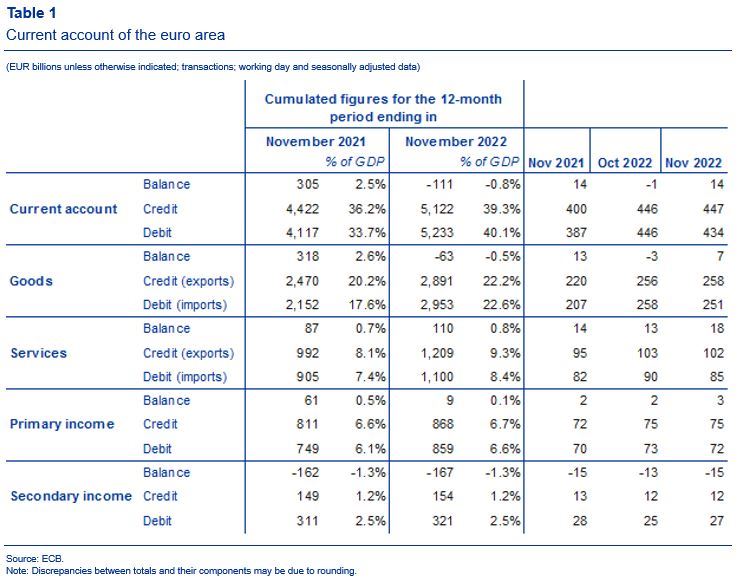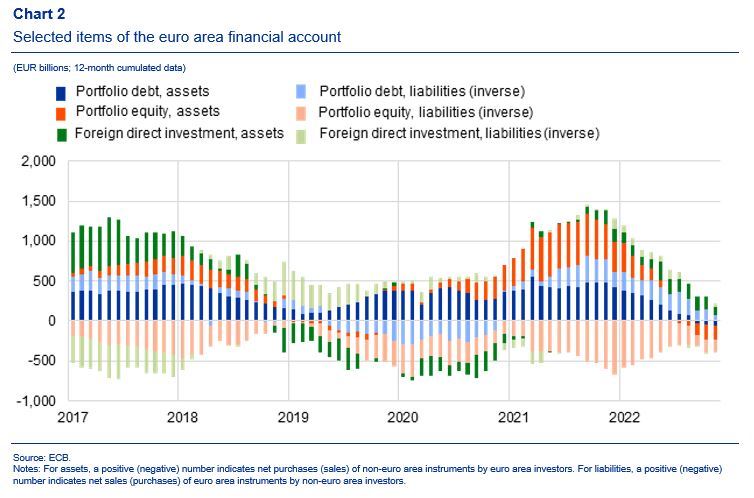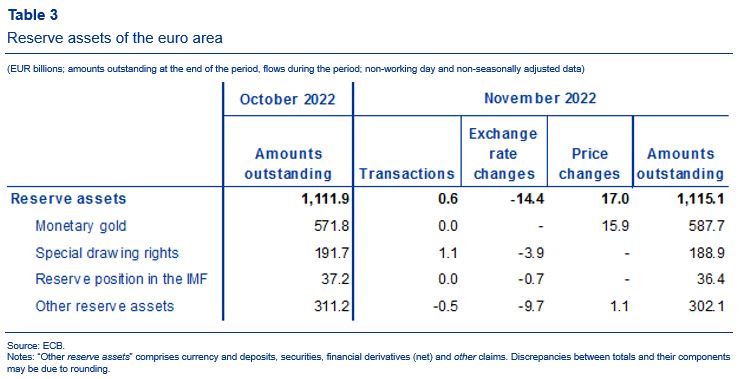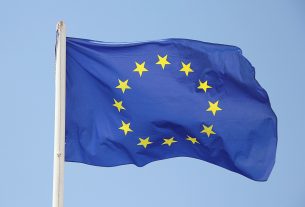- Current account recorded €14 billion surplus in November 2022, following a €1 billion deficit in previous month
- Current account recorded a deficit of €111 billion (0.8% of euro area GDP) in 12 months to November 2022, after a surplus of €305 billion (2.5%) one year earlier
- In financial account, euro area residents’ net sales of non-euro area portfolio investment securities totalled €240 billion and non-residents’ net acquisitions of euro area portfolio investment securities totalled €79 billion in 12 months to November 2022

The current account of the euro area recorded a surplus of €14 billion in November 2022, following a deficit of €1 billion in the previous month (Chart 1 and Table 1). Surpluses were recorded for services (€18 billion), goods (€7 billion) and primary income (€3 billion). These were partly offset by a deficit for secondary income (€15 billion).

Dataforthecurrentaccountoftheeuroarea
In the 12 months to November 2022, the current account recorded a deficit of €111 billion (0.8% of euro area GDP), compared with a surplus of €305 billion (2.5% of euro area GDP) in the 12 months to November 2021. This change in the balance was largely driven by a switch from a surplus (€318 billion) to a deficit (€63 billion) for goods and, to a lesser extent, by a reduction in the surplus for primary income (down from €61 billion to €9 billion) and a slightly larger deficit for secondary income (up from €162 billion to €167 billion). These developments were partly offset by a larger surplus for services (up from €87 billion to €110 billion).

In direct investment, euro area residents made net investments of €107 billion in non-euro area assets in the 12-month period to November 2022, down from €169 billion in the 12 months to November 2021 (Chart 2 and Table 2). Non-residents disinvested €37 billion in net terms from euro area assets in the 12-month period to November 2022, following net disinvestments of €25 billion in the 12 months to November 2021.
In portfolio investment, euro area residents’ net sales of non-euro area equity amounted to €188 billion in the 12 months to November 2022, following net purchases of €431 billion in the 12 months to November 2021. Over the same period, euro area residents’ net sales of non-euro area debt securities amounted to €52 billion, following net purchases of €483 billion in the 12 months to November 2021. Non-residents’ net purchases of euro area equity decreased to €151 billion in the 12-month period to November 2022, down from €600 billion in the 12 months to November 2021. Over the same period, non-residents made net sales of euro area debt securities amounting to €71 billion, decreasing from €294 billion in the 12 months to November 2021.

Dataforthefinancialaccountoftheeuroarea
In other investment, euro area residents increased the net acquisitions of non-euro area assets to €271 billion in the 12 months to November 2022 (up from €217 billion in the 12 months to November 2021), while their net incurrence of liabilities decreased to €208 billion (down from €814 billion in the 12 months to November 2021).

The monetary presentation of the balance of payments (Chart 3) shows that the net external assets (enhanced) of euro area MFIs decreased by €134 billion in the 12-month period to November 2022. This decrease was driven by euro area non-MFIs’ net outflows in other investment, direct investment and other flows. These developments were partly offset by euro area non-MFIs’ net inflows in portfolio investment equity and portfolio investment debt and, to a lesser extent, by the current and capital accounts surplus.
In November 2022 the Eurosystem’s stock of reserve assets increased to €1,115.1 billion, up from €1,111.9 billion in the previous month (Table 3). This increase was driven by positive price changes (€17.0 billion) – largely due to monetary gold price developments – and, to a lesser extent, by net acquisitions of assets (€0.6 billion), which were partly offset by negative exchange rate changes (€14.4 billion).

ecb.europa.eu


















